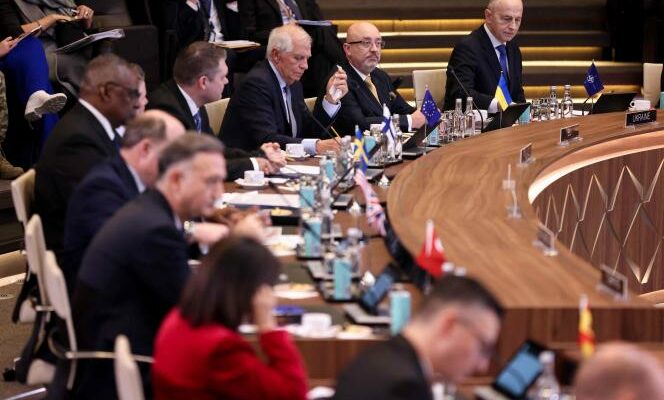The war in Ukraine and assistance with arms and other ammunition were at the heart of the discussions at the meeting between the defense ministers of the North Atlantic Treaty Organization (NATO), Tuesday, February 14, in Brussels. But another debate is in the making between the thirty allies – to which are added Sweden and Finland, which, pending their accession, attend as guests of the exchanges: the size of the budget which the allies will devote to their defense in the future. “It’s a thorny debate that is accelerating”, recognizes a European diplomat. A subject obviously linked to Ukraine and Russia.
In September 2014, a few weeks after the Russian invasion of Crimea, the heads of state of the NATO allies, still in shock, met in Wales. They pledged to stop reducing their defense spending and to increase it, with the objective, by 2024, of reaching a minimum level of defense spending of 2% of gross domestic product (GDP). . At the time, only three countries, the United States, Greece and the United Kingdom, exceeded this level.
They also committed to allocate “at least 20% of their annual defense expenditure on the acquisition of major new equipment”. Almost ten years later, “what the allies would like to dosaid Julianne Smith, the American ambassador to NATO, on Monday, it means announcing at the Vilnius summit, in July, what will come after this commitment, and there, there is a whole panoply of options (…), such as making certain objectives mandatory or reviewing the indicators to be monitored. The allies will discuss it”.
More subdued American pressure
The tone of the Biden administration, however, has changed significantly from that used by Donald Trump. In 2018, at the NATO summit in Brussels, the President of the United States demanded that European countries devote ” immediately “ 2% of their GDP to their security. And that they pass after 2024 to 4%. American pressures are still present, even if they are much more subdued. While the Russian threat has never been so close after the outbreak of war in Ukraine, the debate will be tough, given the efforts already made.
In 2022, only seven new countries, including the countries bordering Russia, the three Baltic countries or Poland, in particular, exceeded the 2% mark. France, it was approaching this level and should exceed it in the years to come, after the announcement, on January 20, by Emmanuel Macron of a new military programming law 2024-2030 in strong increase.
You have 50.31% of this article left to read. The following is for subscribers only.
